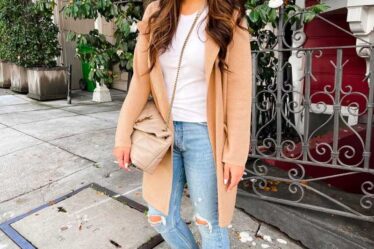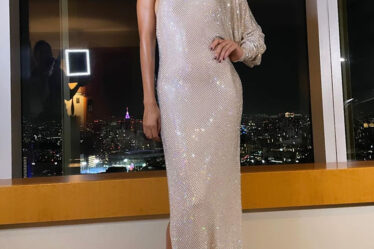
The luxury sector can learn from the art market’s pain.
Sellers of Balenciaga bags and Banksy works have both been hit by last year’s bursting of the bling bubble. The art market responded by ensuring it has a plentiful supply of affordable pieces to tempt new buyers. Luxury houses should do the same.
Demand for both Rolexes and Rothkos soared during the pandemic, as young people and the middle class treated themselves to designer labels and the uber-rich indulged in art. Luxury brands pushed up their prices thinking the good times would never end. The hype around some contemporary artists drove their values higher too.
Well, enthusiasm for both sectors eventually waned.
Personal luxury goods sales are estimated to have fallen as much as 3 percent last year to about $414 billion, according to Bain & Co. The global art market fared even worse, with sales falling 12 percent to an estimated $57.5 billion, according to art economist Clare McAndrew’s latest state-of-the industry report for Art Basel and UBS Group AG. The decline was driven by fewer works of art changing hands at the very highest levels. It seems uncertainty about demand made many collectors reluctant to put their works into public auctions.
There were some big sales in 2024, such as Ed Ruscha’s Standard Station, Ten-Cent Western Being Torn in Half, which achieved a record price for the artist of $68.3 million, and Jean-Michel Basquiat’s Untitled (ELMAR), which sold for $46.5 million. One work breached the $100 million mark: Rene Magritte’s L’Empire des Lumieres sold for $121 million. But overall, the number of works achieving over $10 million at auction fell by 39 percent, compared with 2023.
Another factor contributing to last year’s decline was the slowdown in the so-called “ultra contemporary market,” typically pieces created within the past 20 years or by artists under 40 at the time of sale. Indeed, some of those who enjoyed a boom in recent years, including Kaws and Banksy, as well as ultra-contemporary names such as Avery Singer, Flora Yukhnovich and Nicolas Party, have seen their markets contract.
The boom and bust in non-fungible tokens also contributed to the decline. Separate data from art information provider Artprice.com shows that the market for works changing hands when the artist was under 40 was worth around a quarter of its 2021 value last year.
In another parallel with luxury, the Chinese art market also shrank. While its performance boosted global sales in 2023, art sales in mainland China and Hong Kong fell by almost a third to $8.4 billion in 2024, the lowest level since 2009, according to Arts Economics. The sluggish economy, a property slump and less interest in conspicuous consumption all took their toll.
There are green shoots, though: Turnout at Art Basel’s most recent Hong Kong fair at the end of March looked good, as attendees, including VIP buyers, returned from mainland China. That’s fortunate given the market will be looking to Chinese shoppers even more as US buyers fear a recession.
Both art and luxury are at risk of being hurt by tariffs. There are hopes that fine art will be exempt. Designer brands, which mostly manufacture in Europe, are also in a better position than mass-market retailers whose supply chains are mostly in Asia. But each industry is exposed to the negative wealth effect of tumbling equity markets. The contemporary art market especially will suffer if trade barriers make it harder for pieces to move across borders.
However, there is one bright spot in the art market that provides hope for luxury too.
While 2024 brought a downturn for nearly all segments, the auction market for works under $5,000 grew in value by 7 percent, while the number of lots sold rose by 13 percent, according to Arts Economics, also likely aided by the evolution of digital sales, enabling galleries and dealers to reach a broader audience.
McAndrew, founder of Arts Economics, told me that if galleries went into an art fair with appropriately priced pieces, they sold well. “That was the key to last year, reading the room a bit,” she said.
Luxury brands should do the same. Some are trying to reconnect with disillusioned customers, with small leather goods and mini bags, which can be cheaper without devaluing a brand.
Louis Vuitton’s successful reissue of its early 2000s collaboration with Japanese artist Takashi Murakami contains high-priced items, such as $12,000 trunks, but many products are priced below $3,000 with some under $1,000. Sister brand Christian Dior has also introduced the D-Journey bag starting at $4,000 — not exactly cheap chic but more affordable than, say, a classic Lady Dior bag at over $6,000.
Former LVMH Moet Hennessy Louis Vuitton SE chief financial officer Jean-Jacques Guiony said in October that it would be a mistake to go too far in this direction toward affordability. But by having plenty of options at lower price points, the art world appears to have brought in new customers, who could eventually trade up. Of course, the financial brackets are very different here — we’re talking millions of dollars for some works of art and thousands for many handbags and watches — but the dynamics are similar. Big bling could do with an artful boost.
By Andrea Felsted
Learn more:
How Agents Are Reshaping the Art World
The sector is adopting a model that’s common in other talent-driven industries as more established artists expand into everything from fashion collaborations to films. Plus, James Bond under Amazon and the ‘auto-destruction of architecture.’
Content shared from www.businessoffashion.com.



